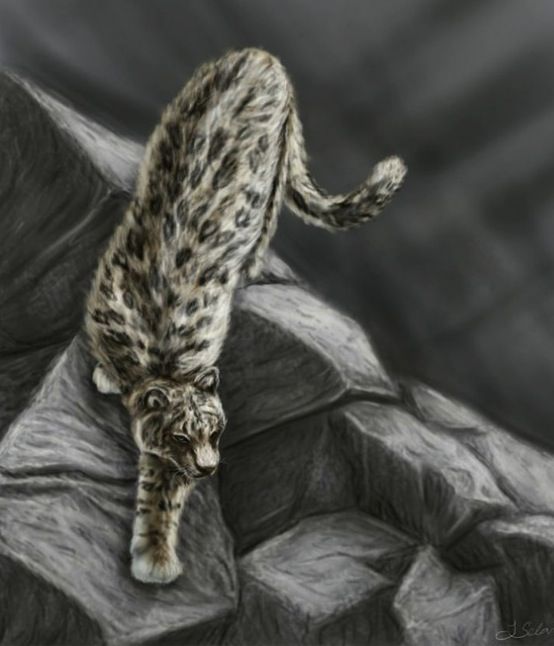
Scientists
who study the origins of cats have a puzzle to solve: genetic studies
indicate that the big cats (lions, tigers, jaguars, and leopards) split
off from other cat species about 10.8 million years ago and the oldest
common ancestor to today's big cats lived in Asia over 6 million years
ago, while paleontologists have fossils going back only 3.8 million
years, and they were from Africa. But in 2010, American Museum of
Natural History paleontologist Jack Tseng found a collection of cat
bones in Tibet that were hard to place. Three years of study later,
Tseng and his team have announced a new cat species,
Panthera blytheae, from fossils that range from 4 to 6 million years old. The discovery rearranged the cat family tree.
This
new tree firmly anchors the origin of the big cats in central Asia. It
also says that the group is even older than previously thought,
diverging from other cats 18.7 million years ago.
The clouded
leopards then split off from the other pantherines 16.4 million years
ago, and moved into Southeast Asia. The remaining lineages diverged into
two main branches around 10.2 million years ago. One spread into the
rest of southern and eastern Asia, and gave rise to P.blytheae, the snow
leopard and the tiger. The other spread west into the Middle East,
Africa and the Americas, giving rise to the lion, leopard, jaguar, cave
lion and American lion.
Studying prehistoric cats
is difficult (as is studying modern cats) because they look so much
alike, especially without skin or fur. It is thought that the new cat
P. blytheae hunted prey like ancient horses, antelope, and sheep -just like their descendants do today. Read the rest of the story at
Not Exactly Rocket Science.
 Scientists
who study the origins of cats have a puzzle to solve: genetic studies
indicate that the big cats (lions, tigers, jaguars, and leopards) split
off from other cat species about 10.8 million years ago and the oldest
common ancestor to today's big cats lived in Asia over 6 million years
ago, while paleontologists have fossils going back only 3.8 million
years, and they were from Africa. But in 2010, American Museum of
Natural History paleontologist Jack Tseng found a collection of cat
bones in Tibet that were hard to place. Three years of study later,
Tseng and his team have announced a new cat species, Panthera blytheae, from fossils that range from 4 to 6 million years old. The discovery rearranged the cat family tree.
Scientists
who study the origins of cats have a puzzle to solve: genetic studies
indicate that the big cats (lions, tigers, jaguars, and leopards) split
off from other cat species about 10.8 million years ago and the oldest
common ancestor to today's big cats lived in Asia over 6 million years
ago, while paleontologists have fossils going back only 3.8 million
years, and they were from Africa. But in 2010, American Museum of
Natural History paleontologist Jack Tseng found a collection of cat
bones in Tibet that were hard to place. Three years of study later,
Tseng and his team have announced a new cat species, Panthera blytheae, from fossils that range from 4 to 6 million years old. The discovery rearranged the cat family tree.
No comments:
Post a Comment